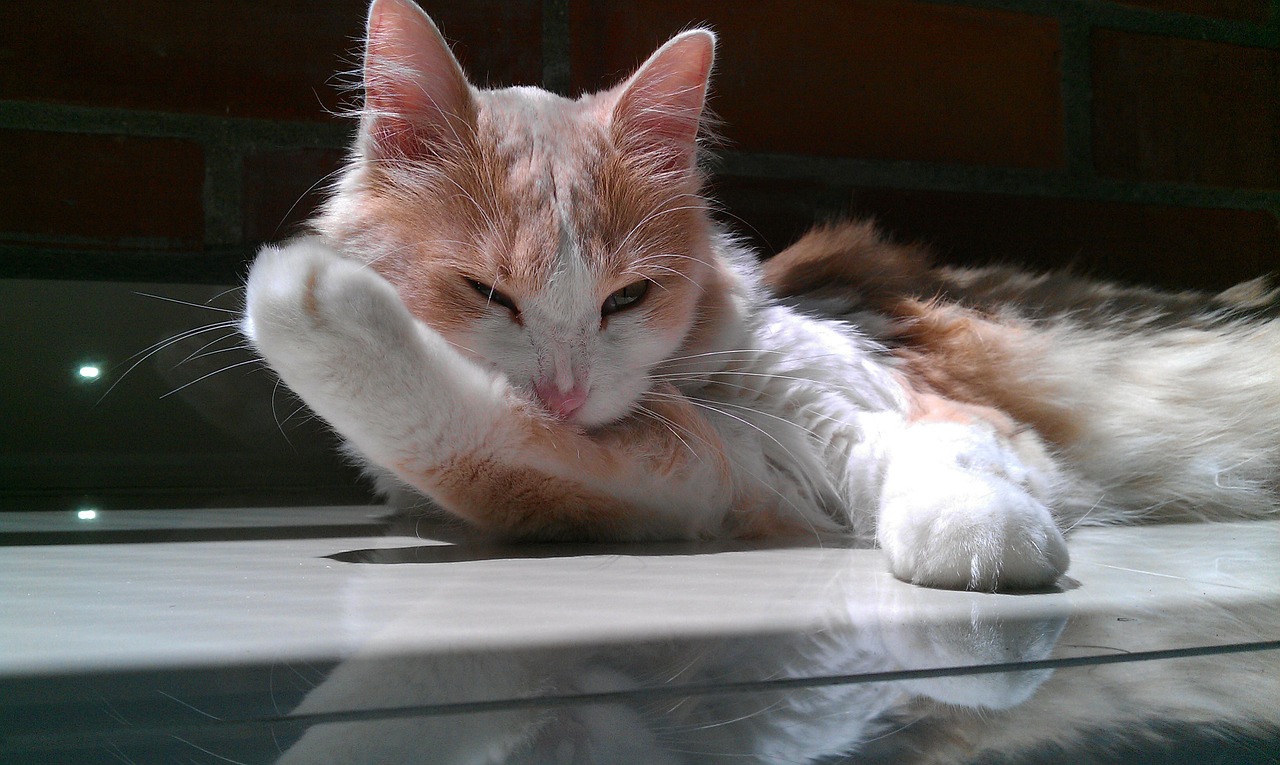If your cat is shedding dandruff, the cause may simply be dry skin. The lower back and base of a cat’s tail are subject to dry skin. It is usually most commonly found on the face and along the back and the base of the tail but any part of the body can be affected. Dandruff can be hard to see on lighter coloured cats. A cat comb or brush can also help you diagnose dandruff if your cat has thicker fur. Cat dandruff can be caused by a variety of factors both medical and environmental. Common triggers are:
- Skin loses moisture during dry winter months. Dry skin gets worst in certain climates where there is a lack of moisture in the air.
- If your cat is on a low-fat diet, skin can flake from lack of oils and fats in the skin.
- An older or obese cat may have difficulty grooming himself and will develop greasy, flaky skin.
- During a bath, always rinse shampoo out of your cat’s coat completely until suds disappear. Use a moisturizing shampoo and follow with a conditioner.
- If bathwater is too hot, dry skin is also likely to develop, your cat’s skin responds the same way yours does after a long, hot soak.
- Parasites can also be a cause of dandruff. Allergic skin reactions due to fleas and other parasites will also cause dandruff to become more prominent in your cat.
Low-end cat food doesn’t have the nutritional value your cat needs to maintain a healthy coat. Make sure the food has essential fatty acids, like Omega-3. Read the labels and know what to look for. Proteins and vitamins B and E nourish the skin and fur. Give your cat a small amount of wet food every day to keep his coat glossy and his skin moisturized.
If dandruff is persistent, consult your vet. Dry skin may be a sign of a more serious problem, such as mange, flea allergy, ringworm, or seborrhea. Heavy dandruff can also signal hyperthyroidism or diabetes.







